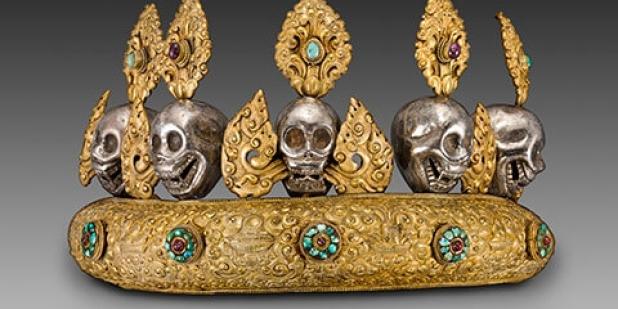Join us for a free one-day workshop for educators at the Japanese American National Museum, hosted by the USC U.S.-China Institute and the National Consortium for Teaching about Asia. This workshop will include a guided tour of the beloved exhibition Common Ground: The Heart of Community, slated to close permanently in January 2025. Following the tour, learn strategies for engaging students in the primary source artifacts, images, and documents found in JANM’s vast collection and discover classroom-ready resources to support teaching and learning about the Japanese American experience.
Vanishing Beauty: Asian Jewelry and Ritual Objects from the Barbara and David Kipper Collection
Art Institute Chicago presents an exhibition of jewelry and ritual objects from nomadic and tribal cultures of Asia.
Where

June 19, 2016–August 21, 2016
Regenstein Hall
Immerse yourself in the rich cultures of some of Asia’s most remote regions with this summer’s exhibition Vanishing Beauty. Drawn from Art Institute Trustee and accomplished photographer Barbara Levy Kipper’s sweeping collection of Asian jewelry and ritual objects promised to the museum in 2014, the exhibition presents more than 300 exquisitely crafted works—highlights from this expansive, diverse, and thoughtfully assembled collection—that offer a panoramic view of the fast-disappearing nomadic and tribal cultures of Asia.
Among the pieces on view are a vast collection of Tibetan and greater Himalayan Buddhist ritual objects and adornments, Islamic silver jewelry from the nomadic tribes of Turkmenistan and the city-states of Uzbekistan, tribal and folk jewelry from across South Asia, personal ornaments from the Indonesian archipelago, and the monumental jewelry of southwestern China’s ethnic minorities. Tying all these disparate objects together is the fact that the peoples who produced them have largely been pushed into the margins, surviving today only in the remotest of areas. In these cultures, jewelry is auspicious and holds great meaning; it is rarely mere adornment. Necklaces, pendants, earrings, and headdresses all serve social, ritual, or talismanic purposes.
A highlight of this manifold use of jewelry is a cobra-like headdress (perak) from Tibet composed of long rows of turquoise stones that, when worn, cascade from a woman’s forehead down the length of her back. A stone synonymous with Tibetan jewelry, turquoise is believed to hold mystical healing properties, and its quantity and quality act as status symbols for the wealth of a woman and her family. With more than 100 large turquoise stones as well as small amulet cases (gaus), this stunning perak signifies great spiritual and earthly fortune for its wearer and joins hundreds of similarly meaning-filled objects in this vibrant display of craftsmanship and culture.
The exhibition flows through five geographical areas—from mountaintop monasteries in the Himalayas to oasis settlements of the Central Asian steppes marked by grand blue-tiled mosques, madrasahs, and mausolea; on to the pastoral regions and deserts of South Asia and the most secluded islands of Indonesia; and finally to the river valleys in China’s mountainous Guizhou province. Providing an immersive experience with music and video installations throughout the galleries, Vanishing Beauty brings these dispersed cultures to life through a dazzling array of extraordinary objects, each rich with stories from some of the most inaccessible regions of the world.
Sponsors
Vanishing Beauty: Asian Jewelry and Ritual Objects from the Barbara and David Kipper Collection is generously sponsored by Barbara Levy Kipper, The Kipper Family Foundation.
Annual support for Art Institute exhibitions is provided by the Exhibitions Trust: Kenneth Griffin, Robert M. and Diane v.S. Levy, Thomas and Margot Pritzker, Betsy Bergman Rosenfield and Andrew M. Rosenfield, the Earl and Brenda Shapiro Foundation, and the Woman’s Board.
Featured Articles
Please join us for the Grad Mixer! Hosted by USC Annenberg Office of International Affairs, Enjoy food, drink and conversation with fellow students across USC Annenberg. Graduate students from any field are welcome to join, so it is a great opportunity to meet fellow students with IR/foreign policy-related research topics and interests.
RSVP link: https://forms.gle/1zer188RE9dCS6Ho6
Events
Hosted by USC Annenberg Office of International Affairs, enjoy food, drink and conversation with fellow international students.
Join us for an in-person conversation on Thursday, November 7th at 4pm with author David M. Lampton as he discusses his new book, Living U.S.-China Relations: From Cold War to Cold War. The book examines the history of U.S.-China relations across eight U.S. presidential administrations.




